Different breeds, diets, and levels of exercise affect the form and size of a horse’s body. Choosing a horse to ride will depend on many factors, such as temperament. However, how tall a horse is will play a crucial role in your suitability as its rider. Additionally, you’ll need to know the height of a horse to keep track of its food and activity requirements. We’re here to tell you everything you need to know about measuring how tall a horse is.
Hands Unit
Horses are measured in a unit called “hands.” This is often abbreviated as “H” or “hh.” One hand is equivalent to four inches (ten cm). Historically, this was based on a handspan, but as this caused a great deal of variation, it was standardized by King Henry VIII and is still used today. Despite the introduction of imperial and metric measurement systems, the hand unit is a cherished part of the equestrian culture. It is commonly the norm in English-speaking countries like the United States, Canada, New Zealand, Australia, Ireland, and the United Kingdom. However, the International Federation for Equestrian Sports (IFES) and other organizations utilize metric units more often than imperial units in different regions of the globe.
How Tall Is the Average Horse?
A typical, full-grown adult horse is between 14-16 hh (56-68 in) tall. Still, some horses are smaller. However, any horse shorter than 14.2 hh (58 in) is considered a pony for competition and breeding purposes. We’ll go into more detail about the differences between horses and ponies later on.
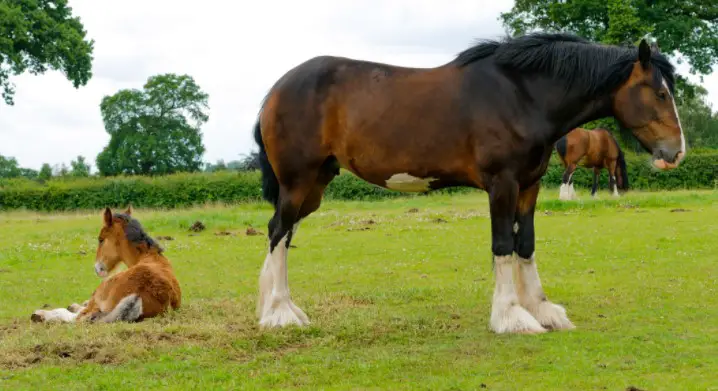
Larger riding horses are often closer to 15.2–17 hh (62-68 in), whereas heavier or draft horses are usually 16–18 hh (64-72 in) tall. Comparatively, light riding horses tend to be between 14–16 hh (56-68 in). Various factors, such as genetics and diet, may impact growth.
How to Properly Measure a Horse
It is customary to measure a horse’s height from its tallest point at the withers—this is where the neck joins the back—all the way down to the ground.
To do so, the first step in getting ready to measure a horse is to make sure it is standing on a level surface. Next, you’ll want to take your measurement from the horse’s withers to the ground. The highest point of a horse’s withers is generally in line with its front legs. For an accurate measurement, make sure to measure your horse without shoes.
We recommend using a measuring stick with hand intervals. However, you can always convert your measurement into hands from inches or centimeters. You may convert the measurement to hands by splitting the height into four parts following the size in inches. Therefore, any measuring stick or even a measuring tape will do. If you use a measuring tape, ask for help to take your measurement to ensure that the tape is held completely straight.
Types of Horses According to Their Height
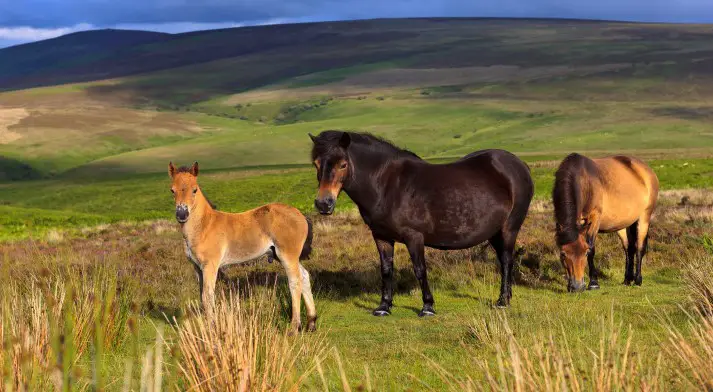
Ponies
Ponies are available in three sizes: small, medium, and large. For competition reasons, a small pony cannot be taller than 12.2 hh (50 in) in height. Meanwhile, a medium pony may be anywhere between 12.2-13.2 hh (50-54 in). A large pony is classified as any over 13.2 hh (54 in) and under 14.2 hh (58 in).

Small Horses
Some horses naturally tend to be on the smaller side. These include Quarter horses. A well-known and well-loved breed, American Quarter horses, account for the highest number of annual registrations in the United States, yet averages only 14.2 hh (58 in). Similarly, Morgan horses are compact beasts that average around 15 hh (60 in). A third well-known breed, the Arabian, also ranks quite short. Though not popular in the US, the Arabian stands at an average height of 15 hh (60 in). Smaller Arabians can be as short as 14 hh (56 in), while the tallest among them will only be as much as 15.2 hh (62 in).
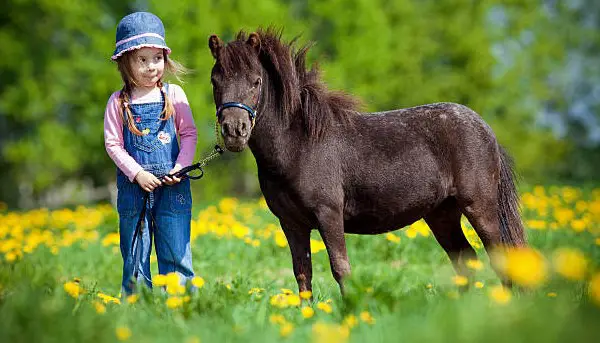
Tall Horses
Warmblood breeds tend to be the tallest horses you’ll find and are mainly used for riding. In fact, they are often employed as sport horses in disciplines such as dressage, showjumping, and eventing. Though many of them have “normal” stature, two racing breeds stand out taller than the usual horse. With a range of 15.2-17 hh (62-68 in) or more, Thoroughbred horses develop to an average height of approximately 16 hh (64 in).
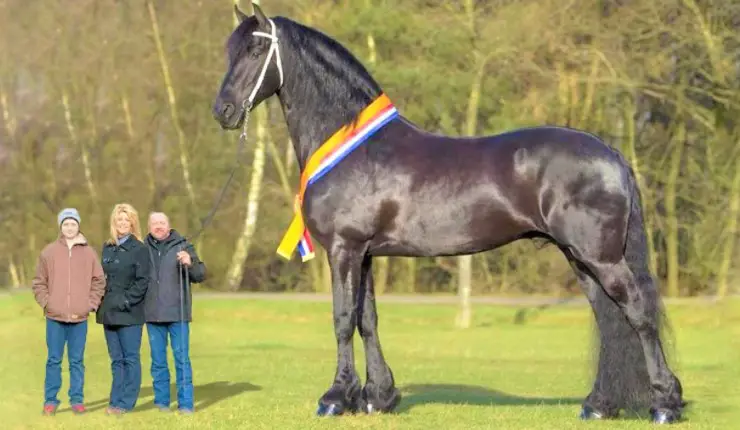
Standard racing bred horses stand around 16 hh (64 in) tall on average. However, their height will range from 15-16.2 hh (60-66 in), with some even taller than that. For example, the Danish Warmblood can stand anywhere between 16.2 (60 in) to 17 hh (68 in). Meanwhile, the Holsteiner measures between 16-17 hh (64-64 in), and Oldenburg horses vary between 16-17.2 hh (64-70 in).
Draft Horses
The heaviest of all equines, Draft horses are also the tallest, with an average height between 16-18 hh (64-72 in). Despite their calm demeanor, these “gentle giants” are genuine workhorses, capable of hauling tremendous amounts of weight. When fully grown, the Belgian, one of the most prevalent draft horse breeds, stands at an average height of 16.2 hh (60 in). Additionally, Percheron horses also average 16.2 hh (60 in), as do Clydesdales. However, the Shire horse is the tallest draft horse on average. These magnificent beasts stand tall and proud at around 17 hh (68 in), though many are closer to the 18-hand (72 in) mark. In some cases, they can be as tall as 19 hh (76 in).
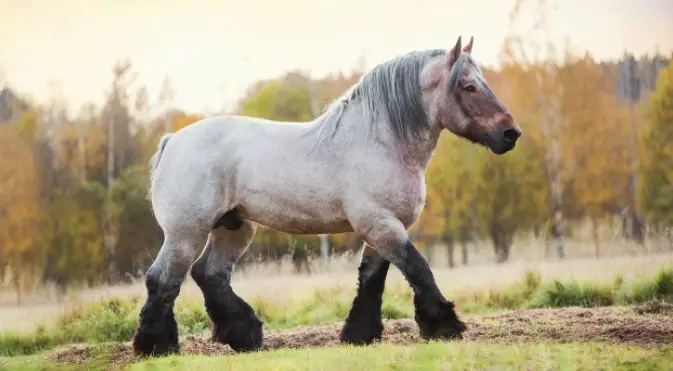
How to Know What Size Horse to Buy
Horse breeds come in a variety of heights. Additionally, outside factors can influence a horse’s growth and ability to reach its full height potential. Choosing the best horse for you will depend on their height, as this influences their suitability for various lifestyles.
If you just want to maintain a horse as a pet and cut its care needs to a bare minimum, you can consider a pony or miniature horse as an option. However, if you want to ride your horse, a pony won’t quite do the trick unless you’re very small and light. For riding, you’ll need to choose a horse that weighs at least seven times as much as you do to guarantee that the horse is capable of carrying your weight as well as additional riding equipment.
For riders, you’ll want to match your horse’s height to your own if possible. If you’re on the shorter side yourself, you may want to consider a likewise horse. However, riders over six feet will likely want to choose a taller horse.
Horse Height in Competition
One of the main areas that horse heights become very specific is competition. Because of the distinction between horses and ponies in competition, how tall your horse is will depend on the division in which you compete. For this reason, some horse sellers may even falsely advertise horse heights to make their horse (or pony) seem more appealing.
Additionally, your horse’s height will affect how well you can compete in certain events. For competitions like barrel-racing, your horse needs to be able to make sharp, quick turns. Horses with a low center of gravity are usually favored to win. For this reason, a shorter horse is likely a better option. Comparatively, events like showjumping are often more suited to taller horses. This becomes even more true when you consider the rider’s height and weight. The bigger the rider, the more work it is for the horse to jump. Bigger riders will want to compensate with a bigger, usually taller, horse.
Conclusion
The kind of work a horse is suited for and how best to care for them will, in part, be influenced by their height. Therefore, to make an informed decision on what horse to buy or to take the best care of a horse you already have, understanding the importance of horse height is crucial. Horses are measured in a unit known as hands, equivalent to four inches. The average horse will be around 14-16 hh (56-64 in). You can measure your horse using any measuring implement and use the information to understand more about your horse. You’ll be able to take better care of your horse and find it easier to purchase gear or decide which events to compete in.
